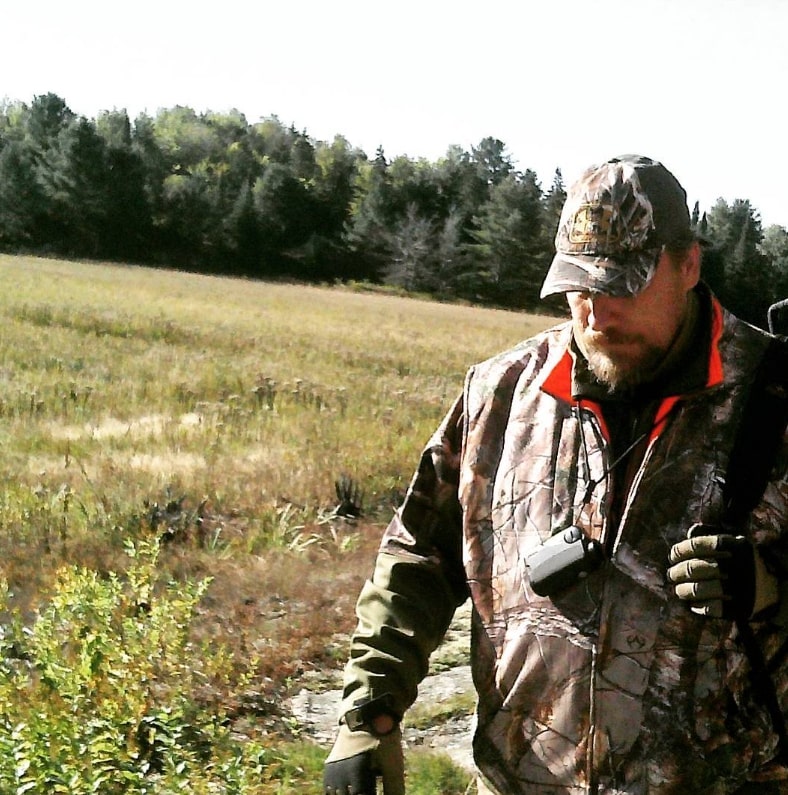Reading Whitetail Deer Sign

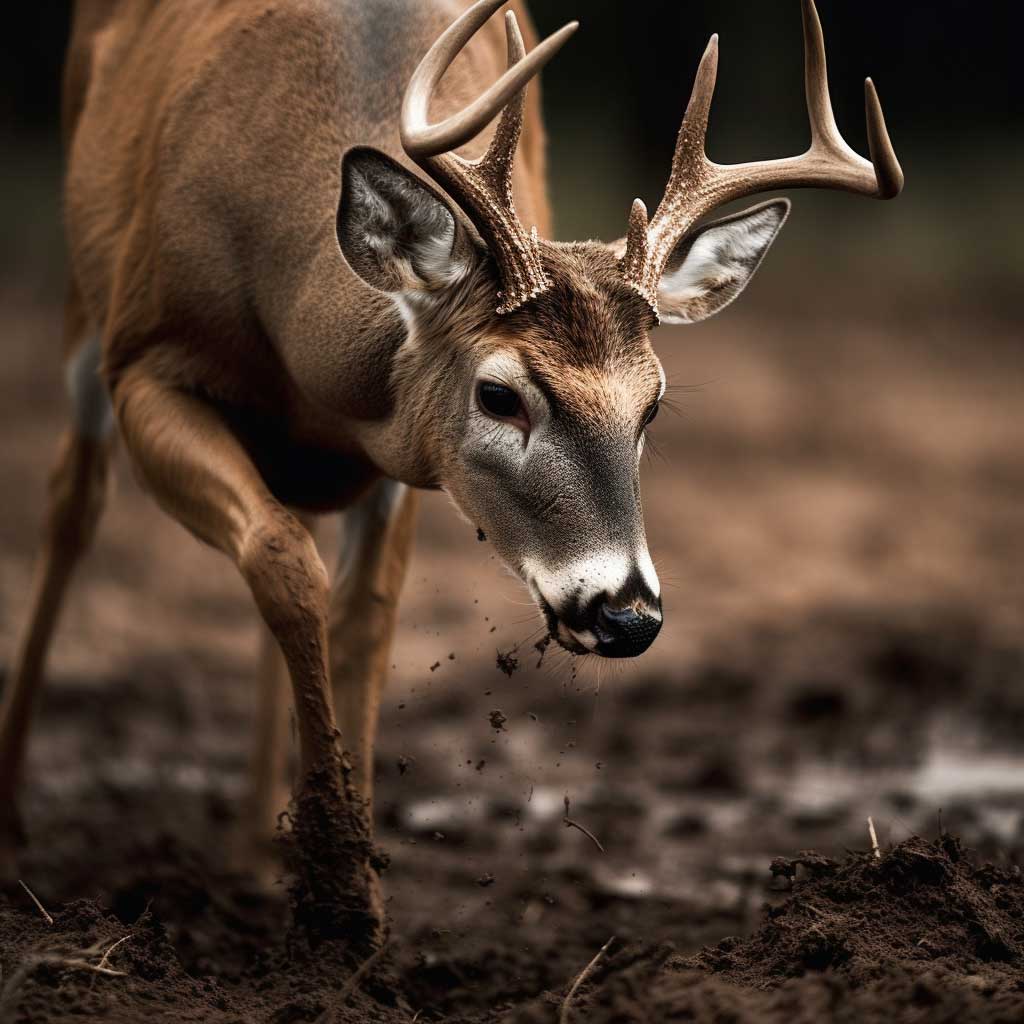
As a seasoned hunter, I’ve learned that successful deer hunting often boils down to being able to read the signs of the animals you’re pursuing. And when it comes to hunting whitetail deer bucks, the ability to interpret the signs is even more crucial. In this blog post, I’ll share some tips and tricks on how to read signs of whitetail deer bucks and increase your chances of a successful hunt.

Rubs and scrapes
Rubs and scrapes are both important signs that hunters use to track whitetail deer, and they provide valuable insights into the buck’s behavior and movements. Rubs are created when bucks rub their antlers against trees, leaving behind distinctive marks and often peeling away the tree’s bark. These marks can vary in size and shape, and they are typically found on trees with a diameter of about 4 to 6 inches.
Bucks make rubs for several reasons, including to remove velvet from their antlers and to mark their territory. When a buck makes a rub, he leaves behind pheromones that signal his presence to other deer in the area, particularly does. Bucks will often make multiple rubs in a small area, which can indicate a high level of activity and territoriality.
Scrapes, on the other hand, are made by bucks pawing the ground and leaving behind a scent from glands on their legs. These scent marks signal to other deer in the area that the buck is present and ready to mate. Scrapes are often located under overhanging branches, which the buck will also mark with his scent by rubbing his forehead against them.
Follow game trails
Following deer trails is an important aspect of hunting whitetail deer bucks. These trails are often well-worn paths that bucks follow repeatedly, particularly during the rut. Bucks use these trails to travel between feeding and bedding areas, as well as to find receptive does.
Identifying deer trails can be done by looking for signs such as flattened grass, broken twigs, and the absence of vegetation. Trails can often be found in areas with dense cover, such as along the edge of a forest or near a stream. These trails may also intersect with rubs and scrapes, indicating that a buck is using the trail.
Once you have identified a deer trail, it can be an excellent spot to set up your blind or tree stand for an ambush. Choosing the right spot to set up is important, as you want to be in an area where you can see the deer approaching but still be hidden from their view. If possible, choose a spot with good cover and a clear line of sight to the trail.
When setting up your blind or tree stand, be sure to take into account the wind direction. You don’t want your scent to be carried towards the deer, as they have a keen sense of smell and can easily detect human odors. Setting up with the wind in your favor will help to minimize your scent and increase your chances of a successful hunt.
By following deer trails, you can increase your chances of encountering a buck during your hunt.
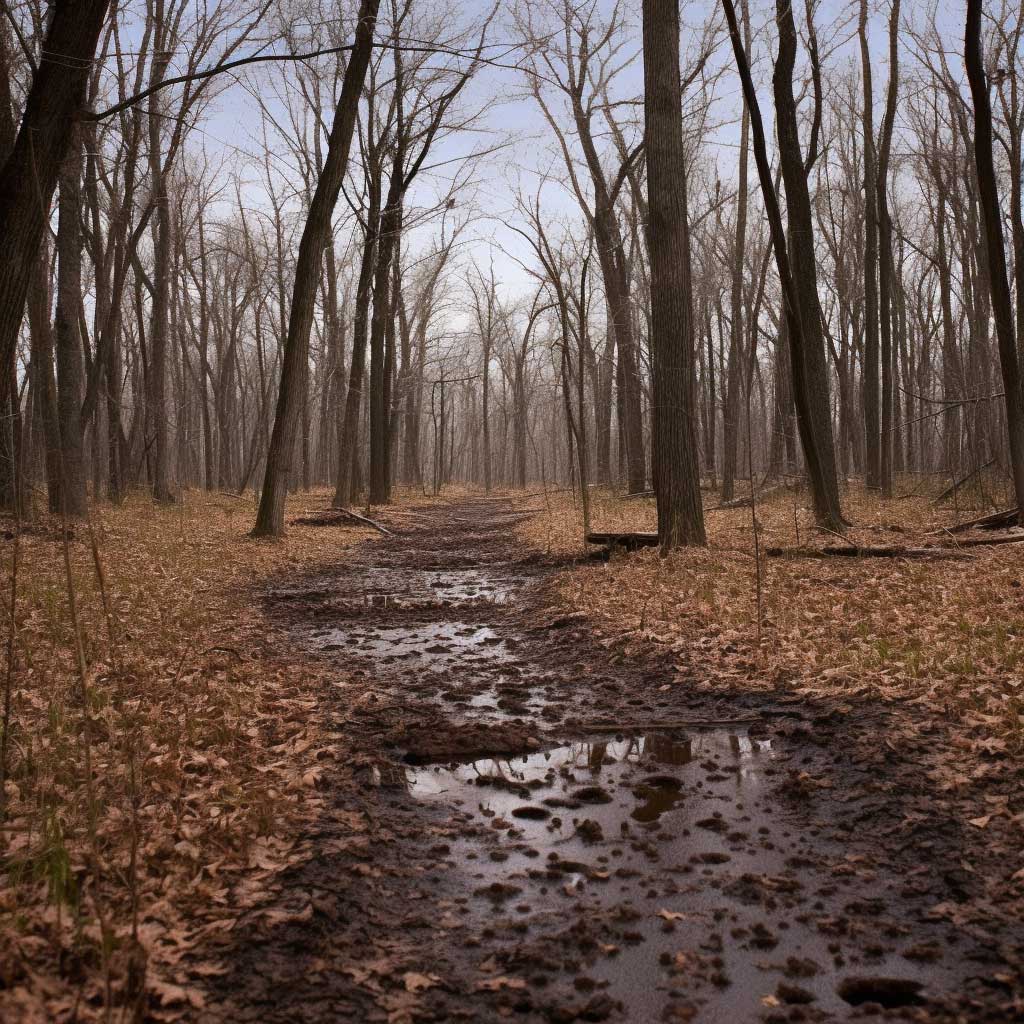
Bedding areas
Whitetail deer are known for their elusive nature and ability to blend into their surroundings. During the day, bucks will often bed down in areas where they feel safe and hidden from predators, as well as from other hunters. These bedding areas can be difficult to locate, but by paying attention to certain signs and behaviors, you can increase your chances of finding them.
One of the most obvious signs of a buck’s bedding area is flattened grass or vegetation. Bucks will often create a small depression in the ground where they can comfortably rest. Look for areas where the grass or vegetation has been pressed down, and pay attention to the direction of the flattened area. Bucks will often position themselves with their backs to the wind, so they can detect predators approaching from downwind.
Another sign to look for is droppings. Bucks will often defecate in or near their bedding areas, leaving behind telltale signs of their presence. Pay attention to the size and shape of the droppings, as well as their freshness. Fresher droppings will be darker and moist, while older droppings will be lighter in color and more dry.
Chewed vegetation is another sign that a buck may be in the area. Bucks will often nibble on leaves and twigs while they bed down, leaving behind small piles of chewed vegetation. Look for areas where the vegetation has been stripped or partially eaten, and pay attention to the height at which the vegetation has been chewed. Bucks will typically feed at a height of about three to four feet off the ground.
If you can locate a buck’s bedding area, you’ll have a good idea of where to set up your blind or tree stand for an ambush.
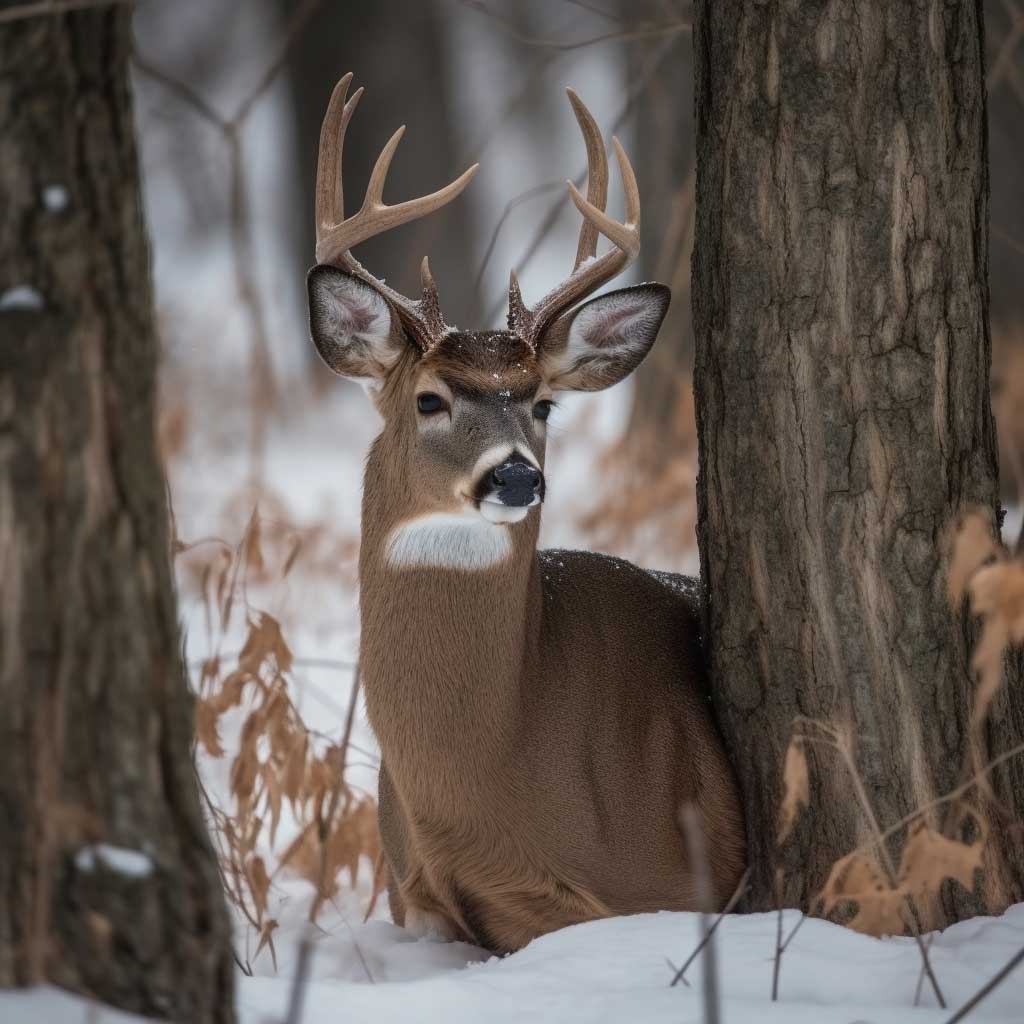
Listen for sounds
While it is commonly known that whitetail deer bucks are skilled at remaining hidden from sight, it may be less well-known that they can also be quite vocal. By understanding the different sounds that bucks make and their meanings, hunters can gain valuable information that can increase their chances of a successful hunt.
One of the most common sounds made by bucks is a grunt. Grunts are low, guttural sounds that are often used to communicate with other deer, particularly does. During the rut, bucks will use grunts to signal their presence and their readiness to mate. Grunts can also indicate a buck’s mood, with short, sharp grunts indicating aggression and longer, deeper grunts indicating a more relaxed state.
Another sound made by bucks is a bleat. Bleats are high-pitched vocalizations that are often used by fawns and does, but can also be made by bucks. Bucks will typically use bleats to signal their presence and to communicate with other deer in the area. During the rut, bucks will often use bleats to attract does.
A snort is another sound that bucks may make. Snorts are loud, abrupt sounds that are used to signal
danger or to alert other deer to potential threats. If a buck snorts, it’s important to remain still and quiet, as the buck may be spooked and run away.
By listening carefully for these sounds, hunters can determine if a buck is in the area and what his mood might be. Grunts and bleats can indicate a buck’s presence, while snorts may indicate that a buck is wary or on high alert. If you hear a buck grunt or bleat, it’s a good idea to wait quietly and see if the buck approaches.
In addition to vocalizations, hunters should also pay attention to other behaviors that may indicate a buck’s presence. For example, if you see a doe that appears to be nervous or on high alert, it may be an indication that a buck is nearby. Bucks will often follow does during the rut, so keeping an eye on their movements can also be helpful.
Ultimately, successfully hunting whitetail deer requires a combination of knowledge, skill, and patience. By paying attention to the various signs and sounds that bucks make, and by carefully observing their behavior, hunters can increase their chances of a successful hunt.
Look for antler sheds
One of the fascinating aspects of whitetail deer hunting is the opportunity to find antler sheds. Bucks typically shed their antlers sometime between late December and early March, after the breeding season has ended. During this time, the male hormone testosterone decreases in their bodies, and this causes the antlers to loosen and eventually fall off.
Finding a shed antler can be an exciting experience for hunters, and it can also provide valuable information about the deer in the area. For example, the size and shape of the antler can give you an idea of the size and age of the buck that shed it. Bucks typically grow larger antlers as they age, so a larger shed antler may indicate an older and more mature buck.
In addition to providing information about the buck, finding a shed antler can also give you an idea of where the buck spends his time. Bucks tend to shed their antlers in areas where they spend a lot of time, such as bedding areas, feeding areas, or along travel routes. By finding a shed antler in a particular area, you can narrow down your search for a buck during hunting season.
If you’re interested in finding shed antlers, there are a few things you can do to increase your chances of success. One of the most important things is to scout the area ahead of time, looking for signs of buck activity such as rubs, scrapes, and bedding areas. You can also look for antler sheds in areas where deer are known to feed, such as around crop fields, fruit orchards, or nut-bearing trees.
When searching for antler sheds, it’s important to be respectful of the deer and their habitat. Avoid disturbing bedding areas or other sensitive areas, and always follow local hunting regulations.
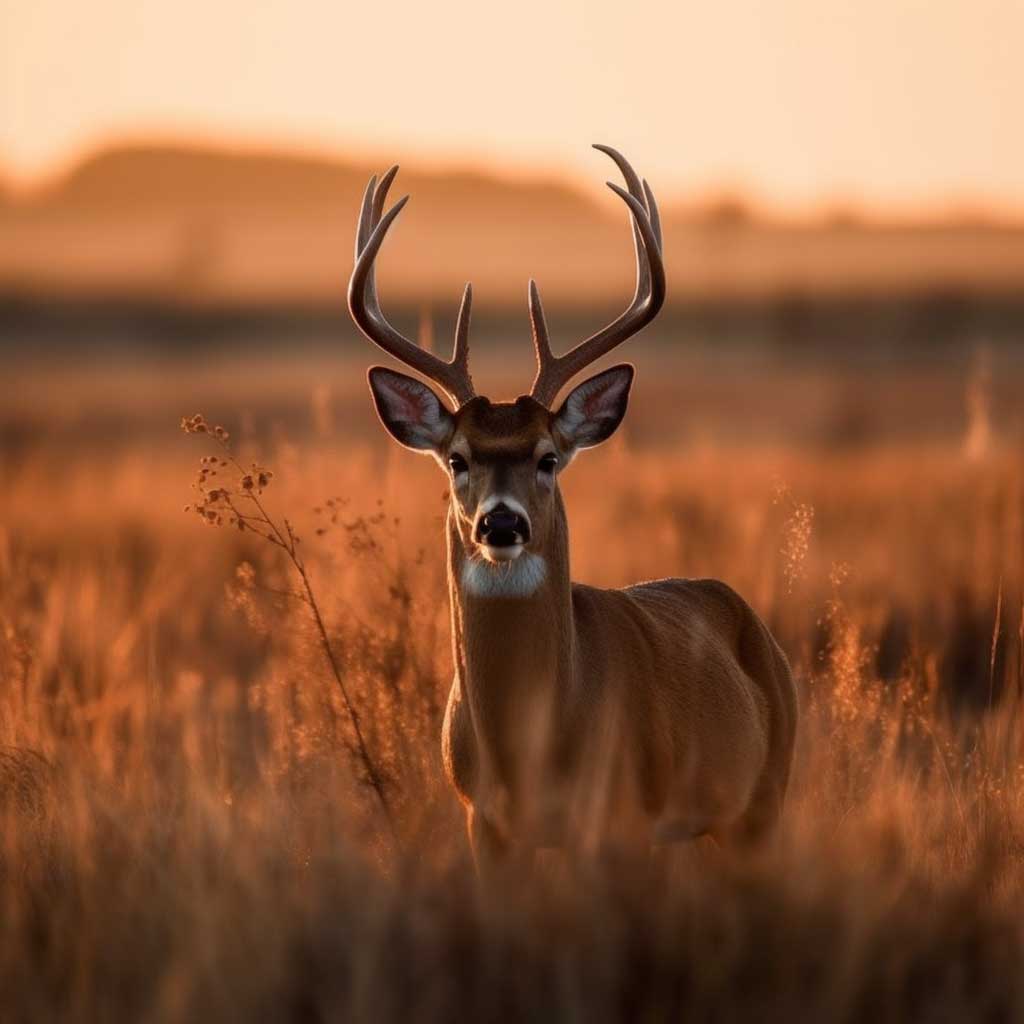
Reading signs of whitetail deer can greatly increase your chances of a successful hunt. By looking for rubs and scrapes, following trails, paying attention to bedding areas, listening for sounds, and looking for antler sheds, you’ll be able to locate bucks and set up in the right spot for a successful hunt. Remember to always practice safe hunting techniques and adhere to local hunting regulations.




